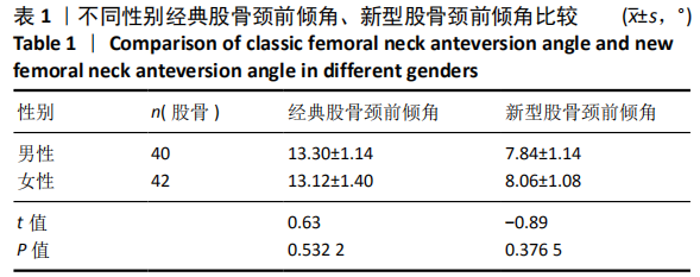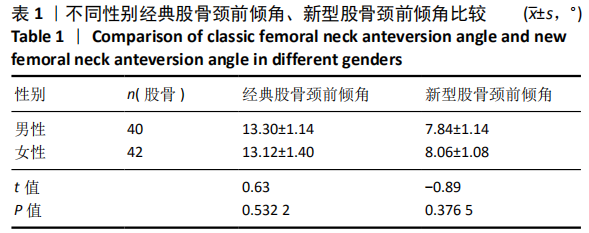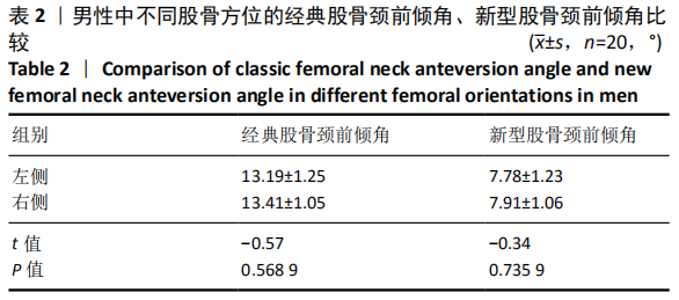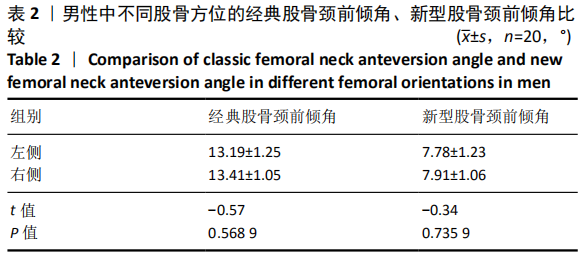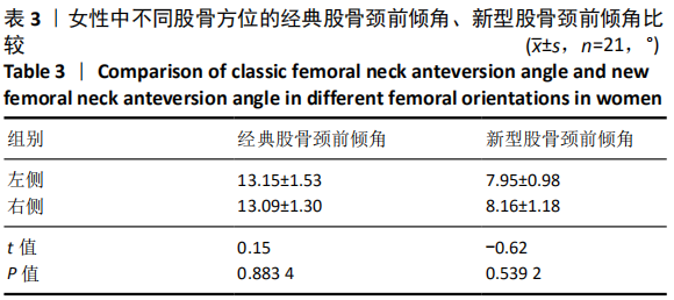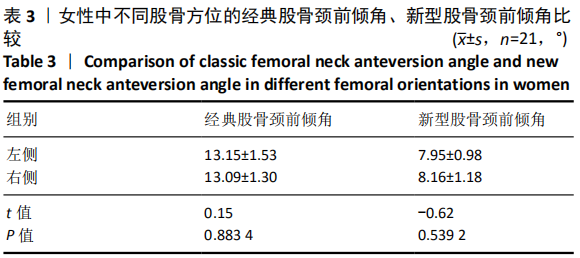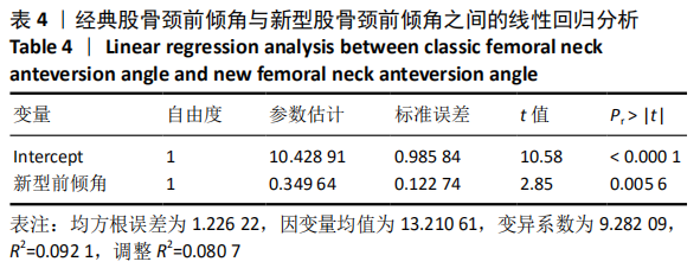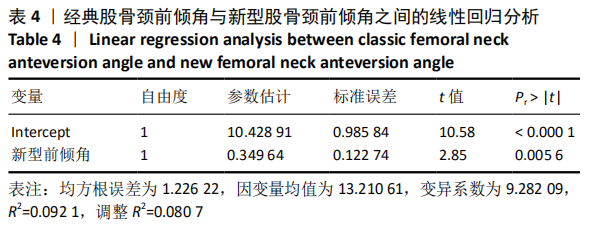[1] TSAI TY, DIMITRIOU D, LI G, et al. Does total hip arthroplasty restore native hip anatomy? Three-dimensional reconstruction analysis. Int Orthop. 2014; 38(8):1577-1583.
[2] SUN X, ZHEN X, HU X, et al. Osteoarthritis in the Middle-Aged and Elderly in China: Prevalence and Influencing Factors. Int J Environ Res Public Health. 2019;16(23):4710.
[3] CHANG JS, HADDAD FS. Long-term survivorship of hip and knee arthroplasty. Bone Joint J. 2020;102-b(4):401-402.
[4] 中华医学会骨科学分会关节外科学组. 骨关节炎诊疗指南(2018年版)[J]. 中华骨科杂志,2018,38(12):75-715.
[5] 王晓东, 魏杰, 郭秀生, 等. 双动全髋关节假体置换术的中期疗效[J]. 中华骨科杂志,2019,39(15):956-934.
[6] LEDFORD CK, PERRY KI, HANSSEN AD, et al. What Are the Contemporary Etiologies for Revision Surgery and Revision After Primary, Noncemented Total Hip Arthroplasty? J Am Acad Orthop Surg. 2019;27(24):933-938.
[7] 张志彬. 联合前倾角对髋关节翻修术旋转中心的指导意义[D]. 石家庄:河北医科大学,2017.
[8] ABDEL MP, VON ROTH P, JENNINGS MT, et al. What Safe Zone? The Vast Majority of Dislocated THAs Are Within the Lewinnek Safe Zone for Acetabular Component Position. Clin Orthop Relat Res. 2016;474(2):386-391.
[9] 陈军, 伏鹏, 王旭刚, 等. 全髋关节置换中C臂X射线机移位测量髋臼前倾角及外展角 [J]. 中国组织工程研究,2016,20(39):5781-5787.
[10] MAYEDA BF, HAW JG, BATTENBERG AK, et al. Femoral-Acetabular Mating: The Effect of Femoral and Combined Anteversion on Cross-Linked Polyethylene Wear. J Arthroplasty. 2018;33(10):3320-3324.
[11] TURNBULL GS, SCOTT CEH, MACDONALD DJ, et al. Return to activity following revision total hip arthroplasty. Arch Orthop Trauma Surg. 2019; 139(3):411-421.
[12] 张倜, 郑充, 马海洋, 等. 髋关节置换中期失败的原因分析[J]. 中华医学杂志,2015,95(3):214-216.
[13] FITZ DW, JOHNSON DJ, HARTWELL MJ, et al. Relationship of the Posterior Condylar Line and the Transepicondylar Axis: A CT-Based Evaluation. J Knee Surg. 2020;33(7):673-677.
[14] ZHANG J, WANG L, MAO Y, et al. The use of combined anteversion in total hip arthroplasty for patients with developmental dysplasia of the hip. J Arthroplasty. 2014;29(3):621-625.
[15] HAYASHI S, NISHIYAMA T, FUJISHIRO T, et al. Evaluation of the accuracy of femoral component orientation by the CT-based fluoro-matched navigation system. Int Orthop. 2013;37(6):1063-1068.
[16] JOLLES BM, ZANGGER P, LEYVRAZ PF. Factors predisposing to dislocation after primary total hip arthroplasty: a multivariate analysis. J Arthroplasty. 2002;17(3):282-288.
[17] SURACE MF, MONESTIER L, D’ANGELO F, et al. Factors Predisposing to Dislocation After Primary Total Hip Arthroplasty: A Multivariate Analysis of Risk Factors at 7 to 10 Years Follow-up. Surg Technol Int. 2016;30:274-278.
[18] BIEDERMANN R, TONIN A, KRISMER M, et al. Reducing the risk of dislocation after total hip arthroplasty: the effect of orientation of the acetabular component. J Bone Joint Surg Br. 2005;87(6):762-769.
[19] KENNEDY JG, ROGERS WB, SOFFE KE, et al. Effect of acetabular component orientation on recurrent dislocation, pelvic osteolysis, polyethylene wear, and component migration. J Arthroplasty. 1998;13(5):530-534.
[20] 陈静, 徐磊, 邹月芬. 成人髋关节撞击综合征患者股骨前倾角的CT影像学研究[J]. 临床放射学杂志,2020,39(1):116-119.
[21] LEBLEBICI G, AKALAN E, APTI A, et al. Increased femoral anteversion-related biomechanical abnormalities: lower extremity function, falling frequencies, and fatigue. Gait Posture. 2019;70:336-340.
[22] SUH KT, KANG JH, ROH HL, et al. True femoral anteversion during primary total hip arthroplasty: use of postoperative computed tomography-based sections. J Arthroplasty. 2006;21(4):599-605.
[23] SUGANO N, NOBLE PC, KAMARIC E. A comparison of alternative methods of measuring femoral anteversion. J Comput Assist Tomogr. 1998;22(4):610-614.
[24] UOTA S, MORIKITA I, SHIMOKOCHI Y. Validity and clinical significance of a clinical method to measure femoral anteversion. J Sports Med Phys Fitness. 2019;59(11):1908-1914.
[25] PARK J, KIM JY, KIM HD, et al. Analysis of acetabular orientation and femoral anteversion using images of three-dimensional reconstructed bone models. Int J Comput Assist Radiol Surg. 2017;12(5):855-864.
[26] 徐高翔, 唐佩福. 股骨颈前倾角测量方法的回顾与展望[J]. 解放军医学院学报,2020,41(1):97-100.
[27] 刘阳, 陈俊文, 周建林, 等. 联合前倾角技术在成人发育性髋关节发育不良全髋关节置换术中的应用[J]. 中国骨与关节损伤杂志,2020,35(4): 337-340.
[28] 蒲超, 张珊珊, 李伟, 等. 联合前倾角技术在发育性髋关节脱位患者人工全髋关节置换术中的应用[J]. 西部医学,2019,31(2):291-294.
[29] MCKIBBIN B. Anatomical factors in the stability of the hip joint in the newborn. J Bone Joint Surg Br. 1970;52(1):148-159.
[30] YOSHIMINE F. The safe-zones for combined cup and neck anteversions that fulfill the essential range of motion and their optimum combination in total hip replacements. J Biomech. 2006;39(7):1315-1323.
[31] MALIK A, MAHESHWARI A, DORR LD. Impingement with total hip replacement. The J Bone Joint Surg Am. 2007;89(8):1832-1842.
[32] PARK KK, TSAI TY, DIMITRIOU D, et al. Utility of Preoperative Femoral Neck Geometry in Predicting Femoral Stem Anteversion. J Arthroplasty. 2015; 30(6):1079-1084.
[33] 薛磊, 李乾, 胡刚峰, 等. 成人股骨CT建模及解剖学参数三维自动测量[J]. 中华医学杂志,2019,99(39):3093-3099.
[34] 袁景, 甄平, 宋焱峰, 等. 膝外翻畸形全膝关节置换的假体匹配:三维模型数字化测量与分析[J]. 中国组织工程研究,2015,19(17):2768-2774.
[35] 郭人文, 柴伟, 李想, 等. 机器人辅助在股骨头坏死全髋关节置换术中的应用[J]. 中华骨科杂志,2020,13(40):819-827. |


